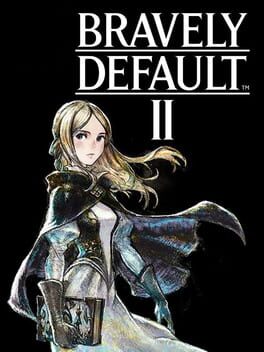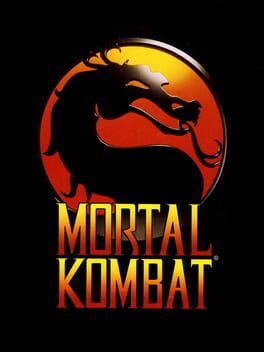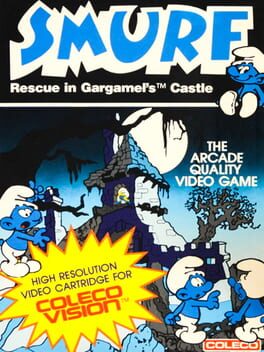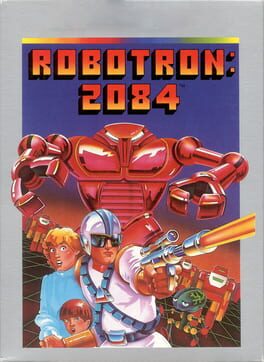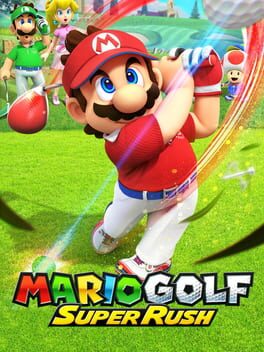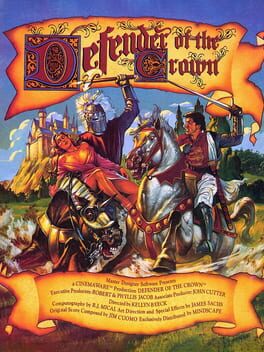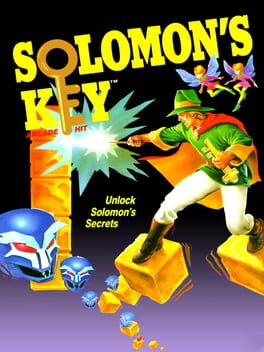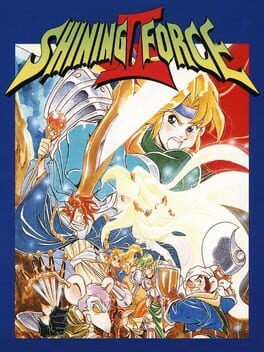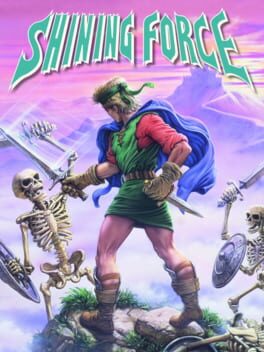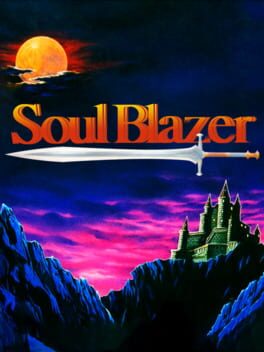2021
This game starts strong, but about halfway through it drops the ball like pro athlete with gambling debt. There's so much potential here; the art, the battle mechanics, and the most of the character development were compelling. The story beats made my eyes glaze over, but that's forgivable. The flaws in the character building, equipment, and items are not.
The optional super-monster fights were the highlight of this game. They were challenging, but winnable with proper strategy. Customizing equipment, abilities, and stocking up on items built the anticipation. Finally defeating a monster that killed you in one round on your first encounter is heavenly. A lot of the story bosses were similarly satisfying.
But as I played, it became more and more apparent not many of the RPG elements, in terms of character building, were special or unique. The whole system winds up feeling more bland and cardboard-y the further you go. You can swap jobs (not just movesets, but all your stats) at any time as often as you want. Some items are unique, but most (even rewards from unique monster fights!) show up in shops. It's like winning a fancy wristwatch at a quiche-baking competition, but then seeing the same watch for $7.99 at Walmart. Sure, it's still true that you baked a delicious, savory quiche with a smooth texture, flaky crust and balanced flavors, but the reward loses some pozazz. There's a small amount of character customization through booster buns, but these are dwarfed by your class stats and aren't very consequential, even in the endgame.
If you can buy an item any time, or choose a set of stats at any moment, you lost the sense that you're building something.
I became numb to unlocking new classes, moves, and abilities because most of them were kinda useless. I'd unlock a new elemental attack, smack an enemy weak to that element, and the results were...underwhelming. Maybe it depends on strategy, but very few moves (or classes, even) seemed worthwhile.
The game was fun for a good chunk of hours, but unfortunately it fizzled out and slogged on instead of culminating.
The optional super-monster fights were the highlight of this game. They were challenging, but winnable with proper strategy. Customizing equipment, abilities, and stocking up on items built the anticipation. Finally defeating a monster that killed you in one round on your first encounter is heavenly. A lot of the story bosses were similarly satisfying.
But as I played, it became more and more apparent not many of the RPG elements, in terms of character building, were special or unique. The whole system winds up feeling more bland and cardboard-y the further you go. You can swap jobs (not just movesets, but all your stats) at any time as often as you want. Some items are unique, but most (even rewards from unique monster fights!) show up in shops. It's like winning a fancy wristwatch at a quiche-baking competition, but then seeing the same watch for $7.99 at Walmart. Sure, it's still true that you baked a delicious, savory quiche with a smooth texture, flaky crust and balanced flavors, but the reward loses some pozazz. There's a small amount of character customization through booster buns, but these are dwarfed by your class stats and aren't very consequential, even in the endgame.
If you can buy an item any time, or choose a set of stats at any moment, you lost the sense that you're building something.
I became numb to unlocking new classes, moves, and abilities because most of them were kinda useless. I'd unlock a new elemental attack, smack an enemy weak to that element, and the results were...underwhelming. Maybe it depends on strategy, but very few moves (or classes, even) seemed worthwhile.
The game was fun for a good chunk of hours, but unfortunately it fizzled out and slogged on instead of culminating.
1992
Best enjoyed in a scummy arcade with a faint smell of stale cigarette smoke. The highlight of this game is the tone. It was gritty in a way that hadn't been seen before in the arcade, and even upon re-visiting, there's an uncanny feel to it that's hard to pin down. The sequels were better games, but they had more of an action/cartoon-y feel. And the hysteric pearl-clutching over Sub-zero's fatality made it all the more alluring.
1990
I like Japan's version of Catholicism better than the one I grew up with. Better Satan. Enix was killing it in this era with innovative games like this one and Soul Blazer. Looking back, they're not flawless, but they're top tier for SNES. The audio for this game is unrivaled. The music's legacy still perseveres, and they absolutely nailed the "getting hit" moan when your character takes damage; nobody has topped it yet.
1994
This game was BIG. Hardware had to be added to the cartridge to contain its big-ness in terms of content - the score, the art, the bestiary, the playable characters, and the epic (also meandering) storyline. It was also majorly hyped to build anticipation amongst us nerds. I mean, according to gaming magazines I read at the grocery while my mom was in the checkout line, this one made FFIV look like NES FF! Turns out it was overblown, but just a little. It's still beloved because it's technically impressive, and because Sakaguchi and Uematsu's emotional arrow still flies true and pierces our stupid hearts.
There are plenty of splendid reviews here that analyze this game in depth, so I'll just offer two thoughts:
1. This game is a masterclass in scoring an RPG. The compositional chops are obviously there, but the work as a whole is greater than the sum of its parts. Looking at a specific piece: the opening theme that plays when you power on the SNES immediately builds tension with a series of musical intervals (4ths). These intervals are often used to create an "unresolved" mood, and Uematsu slowly stacks these intervals on top of each other until you're listening to a grating wall of sound. The release is a dark, epic pair of chords that sustain dramatically on the repeat. Afterwards, a dynamic low - a drizzle of arpeggios played with liberal tempo rubato (in a midi composition? Impressive). Next - dark, intense chords followed by a crescendo and a somber release and outro. This composition tells you so much before the game even begins! This experience will be deep, involved, and vast - there will be mystery and intrigue - you will probably cry at some point - Buckle up. Let's look at just one more: Phantom Train. The most striking feature is the dissonant chord progression that mixes dread, unease, and a whisper of sadness, (it reminds me a bit of the slow "Grim Grinning Ghosts" chords that play under the monologue of the Haunted Mansion ride). The dynamic highs and lows loop beautifully as you explore. I could go on and on about the instrumentation for the different characters (banjo and bagpipes for Relm? Genius!), Dancing Mad, and the ending theme, but I mean, that'd be a thesis. I'll stop here.
2. The mechanics are flawed, but not moreso than other RPGs. The game has fissures to be hammered at, but figuring out how to break it can be a good time! Obviously, if you read online how to create an unstoppable force, it's not super-satisfying to implement (I have certainly been guilty of this). It's like flipping the god mode switch. Boring. But if you craft it yourself, it feels more like an achievement. When I was a kid, I had a few tricks I was proud of, although in retrospect, I don't think they're too difficult to come up with:
-Gem Box / Economizer / Ultima (followed by a Gogo Mimic)
-Gengi Glove / Offering
-Gau + Mog + Umaro w/rage ring + Cyan (the first 3 auto-battle while Cyan charges Sword-Tech)
I know there are more powerful builds, and I do believe they break the game, but you could say the same about, e.g., Dark Souls. You can design and grind a highly specific game-breaker, but it's not something you'll trip and fall into. There's plenty of room for improvement, but this game's balance is above average. I have to agree with the messy magic system though. It's an organizational nightmare.
I'll be returning to this one.
There are plenty of splendid reviews here that analyze this game in depth, so I'll just offer two thoughts:
1. This game is a masterclass in scoring an RPG. The compositional chops are obviously there, but the work as a whole is greater than the sum of its parts. Looking at a specific piece: the opening theme that plays when you power on the SNES immediately builds tension with a series of musical intervals (4ths). These intervals are often used to create an "unresolved" mood, and Uematsu slowly stacks these intervals on top of each other until you're listening to a grating wall of sound. The release is a dark, epic pair of chords that sustain dramatically on the repeat. Afterwards, a dynamic low - a drizzle of arpeggios played with liberal tempo rubato (in a midi composition? Impressive). Next - dark, intense chords followed by a crescendo and a somber release and outro. This composition tells you so much before the game even begins! This experience will be deep, involved, and vast - there will be mystery and intrigue - you will probably cry at some point - Buckle up. Let's look at just one more: Phantom Train. The most striking feature is the dissonant chord progression that mixes dread, unease, and a whisper of sadness, (it reminds me a bit of the slow "Grim Grinning Ghosts" chords that play under the monologue of the Haunted Mansion ride). The dynamic highs and lows loop beautifully as you explore. I could go on and on about the instrumentation for the different characters (banjo and bagpipes for Relm? Genius!), Dancing Mad, and the ending theme, but I mean, that'd be a thesis. I'll stop here.
2. The mechanics are flawed, but not moreso than other RPGs. The game has fissures to be hammered at, but figuring out how to break it can be a good time! Obviously, if you read online how to create an unstoppable force, it's not super-satisfying to implement (I have certainly been guilty of this). It's like flipping the god mode switch. Boring. But if you craft it yourself, it feels more like an achievement. When I was a kid, I had a few tricks I was proud of, although in retrospect, I don't think they're too difficult to come up with:
-Gem Box / Economizer / Ultima (followed by a Gogo Mimic)
-Gengi Glove / Offering
-Gau + Mog + Umaro w/rage ring + Cyan (the first 3 auto-battle while Cyan charges Sword-Tech)
I know there are more powerful builds, and I do believe they break the game, but you could say the same about, e.g., Dark Souls. You can design and grind a highly specific game-breaker, but it's not something you'll trip and fall into. There's plenty of room for improvement, but this game's balance is above average. I have to agree with the messy magic system though. It's an organizational nightmare.
I'll be returning to this one.
1982
Robotron somehow simulates the stress and intensity of an actual robot apocalypse through the use of, like, 50 pixels on the screen. The responsiveness and precision of the controls make or break a game like this, and Robotron's are like silky tofu - smooth, compliant, and vegan.
The simple rules of play and intuitive controls lead to an addictive experience. When you die, instead of thinking "wtf, I dodged that, the computer cheats", you think "I saw that coming, I'll be ready for it next time" or "hmm, maybe I should kill these guys first". You strategize to avoid or prevent deadly scenarios. You experiment with different paths and priorities. You realize that your plan of attack matters just as much as twitch reaction and skill.
The graphics are just good enough to get the job done (does the main character have huge glasses or something?), but the sound design is bombastic and perfect for an arcade thriller.
It's not a terribly deep game - It's an arcade game after all, good for maybe five or ten plays per session - but it's remarkable how well this humble cabinet with the limitations of 1982 tech holds up.
The simple rules of play and intuitive controls lead to an addictive experience. When you die, instead of thinking "wtf, I dodged that, the computer cheats", you think "I saw that coming, I'll be ready for it next time" or "hmm, maybe I should kill these guys first". You strategize to avoid or prevent deadly scenarios. You experiment with different paths and priorities. You realize that your plan of attack matters just as much as twitch reaction and skill.
The graphics are just good enough to get the job done (does the main character have huge glasses or something?), but the sound design is bombastic and perfect for an arcade thriller.
It's not a terribly deep game - It's an arcade game after all, good for maybe five or ten plays per session - but it's remarkable how well this humble cabinet with the limitations of 1982 tech holds up.
I love video golf - NES Golf, Golden Tee, Toadstool tour, The Jack Nicklous series, Zany Golf (a mini-golf game on Amiga), and most recently Golf Story (I never got around to Beavis and Butthead: Bunghole in One, but apparently that's a thing). These games can provide a type of mesmerizing relaxation when played on their own, but the epitome of of the video golf experience is multiplayer (with the exception of Golf Story). It's thrilling when your opponent sets the parameters on their golf algorithm while you hope they screw up the timing. Your fate is sealed when they set the shot in motion, but you have to wait a beat to see what it will be. The release when they miss or make the shot is a rush, and entices you to play just one more hole. This scenario plays out every turn. After playing for just a few hours, there were more than a few emotional outbursts from me and my friends, both positive and negative. That's what I want from a Nintendo sports title, and this one delivers.
The game is crammed full of Mariosity to its benefit. The roster has most of the characters you'd expect to see (and some you probably don't!), complete with gaudy golf duds. Wario is an absolute Dad. Even King Bob-omb is here - a surprise to be sure, but a welcome one. The mechanics are sophisticated enough to keep things interesting. In addition to the basics - spin, curve, wind, terrain, environmental effects - each golfer has a special shot they can use to attack other golfers' balls. For example, when the special meter is full, Yoshi can eat their ball and spoot it out of their...backside...as a fresh egg down the fairway. When it lands, if other player's balls are in the splash zone, they're turned into eggs for the next shot. This makes them extremely cumbersome to aim, and makes putting neigh impossible. The pinch of chaos adds a pleasant amount of spice.
Although this one doesn't break any significant new ground, it's a solid iterative release with a tried-and-true formula. That's all I really wanted.
The game is crammed full of Mariosity to its benefit. The roster has most of the characters you'd expect to see (and some you probably don't!), complete with gaudy golf duds. Wario is an absolute Dad. Even King Bob-omb is here - a surprise to be sure, but a welcome one. The mechanics are sophisticated enough to keep things interesting. In addition to the basics - spin, curve, wind, terrain, environmental effects - each golfer has a special shot they can use to attack other golfers' balls. For example, when the special meter is full, Yoshi can eat their ball and spoot it out of their...backside...as a fresh egg down the fairway. When it lands, if other player's balls are in the splash zone, they're turned into eggs for the next shot. This makes them extremely cumbersome to aim, and makes putting neigh impossible. The pinch of chaos adds a pleasant amount of spice.
Although this one doesn't break any significant new ground, it's a solid iterative release with a tried-and-true formula. That's all I really wanted.
1986
If you enjoy thinking and faeries, you should play this. You control a wizard named Dana. Dana took the mundane yet practical path in wizard school - he can create and destroy blocks. Not the flashiest ability, but deceptively powerful. Obviously great for mobility and defense, but pulling the rug out from under an enemy and watching them plummet to their death is delicious. The puzzles that the developers squeezed out of the simple mechanics are myriad and sometimes God-cursing-ly cruel. But like, in a good way. It never feels hopeless. The levels have optional objectives, giving it something like an integrated difficulty selector. It's one of those games that only has one track playing on repeat, but at least it's a banger.
This is a solid game for it's time. It's gotta be the best Switch online game that was new to me when I found it (It's competing with stuff like City Connection and Eliminator Boat Duel, but still).
This is a solid game for it's time. It's gotta be the best Switch online game that was new to me when I found it (It's competing with stuff like City Connection and Eliminator Boat Duel, but still).
2000
This review contains spoilers
A lot of things happen in this game, but I can't stop thinking about Morrid, who offers a cup of coffee to a royal knight who threatens him (power move), and whose only desire is to drink gourmet coffee from around the planet. Legend. Learning that he died happy because he was able to try all the coffee I brought him is a thoroughly FF moment - a bit melodramatic, but it squeezes your heart. FFIX is full of moments like these, but it also takes a run at some deeper themes with more success than most other games I can think of. The game asks some difficult questions, and if you stick with it, you can extract some answers. I won't dump them all here, but the important thing is this game made me think thoughts.
The mechanics and gameplay are deep. Tying skills and spells to items worked well - it made finding or synthesizing new gear more exciting, and also resulted interesting incentives (you may not always have the highest stat'd stuff equipped). On the flipside, once you permanently learned a skill, you could use it without the item you got it from - a step up from previous games. There too many side quests and hidden content to mention. I discovered some of it, but I also missed a TON. I accidentally smacked the mouse thing that quizes you if you meet them in a random encounter - sorry little dude, I wonder what I might have gotten from you :( I also missed a pumice piece, so I never got to see the Eidelon it summons. Chocographs, Tetramaster demons, Mognet - The point is, there are a million things to do if you want more content.
Tetramaster took me a long time to wrap my mind around, and I still don't know if I'm doing it right. But I did beat one of the demons in Memoria even though my cards are garbage. My strategy sometimes involves choosing easy-to-beat cards with a lot of arrows in my hand. Can anyone out there consistently win? How do you do it?
The music and the painted backgrounds are timelessly beautiful. I listened to the OST for this game long before playing it, and hearing it in-game was even better (of course). Please do yourself a solid and listen to the piano collections for this one.
I am a huge FFI fan, and the tie-ins with the original game couldn't have been better. Garland showing up made me fall out of my chair, and his vague references to the original game made me smile. Fighting the fiends took me back to the 80s (which is quite a long time ago since I finished IX for the first time in 2021). Being late on this game probably made these throwbacks even better. Well done, Mr. Sakaguchi, it's not easy to pull that off.
My only gripes:
-Some of the dungeon/adventuring sequences seemed very short, especially in comparison to the lengthy skits and cutscenes. I had to force myself into "modern" Final Fantasy mode to enjoy the scenes for what they are.
-I played on PS4, so I was able to use the fast forward feature, which was a Godsend at times for some battle stuff (I didn't use safe travel or the other features).
-So much of this game requires explanations, particularly what certain abilities do or how they work, for example Amarant's spare change, which depends on how much gold you're holding and Amarant's stats. It's possible to figure it out, but it's tricky.
-Who the heck likes having three panning camera shots before EVERY battle?! WHO?? (I am so glad the PS4 version let me turn this off).
This game is a gem (or maybe a crystal?)
The mechanics and gameplay are deep. Tying skills and spells to items worked well - it made finding or synthesizing new gear more exciting, and also resulted interesting incentives (you may not always have the highest stat'd stuff equipped). On the flipside, once you permanently learned a skill, you could use it without the item you got it from - a step up from previous games. There too many side quests and hidden content to mention. I discovered some of it, but I also missed a TON. I accidentally smacked the mouse thing that quizes you if you meet them in a random encounter - sorry little dude, I wonder what I might have gotten from you :( I also missed a pumice piece, so I never got to see the Eidelon it summons. Chocographs, Tetramaster demons, Mognet - The point is, there are a million things to do if you want more content.
Tetramaster took me a long time to wrap my mind around, and I still don't know if I'm doing it right. But I did beat one of the demons in Memoria even though my cards are garbage. My strategy sometimes involves choosing easy-to-beat cards with a lot of arrows in my hand. Can anyone out there consistently win? How do you do it?
The music and the painted backgrounds are timelessly beautiful. I listened to the OST for this game long before playing it, and hearing it in-game was even better (of course). Please do yourself a solid and listen to the piano collections for this one.
I am a huge FFI fan, and the tie-ins with the original game couldn't have been better. Garland showing up made me fall out of my chair, and his vague references to the original game made me smile. Fighting the fiends took me back to the 80s (which is quite a long time ago since I finished IX for the first time in 2021). Being late on this game probably made these throwbacks even better. Well done, Mr. Sakaguchi, it's not easy to pull that off.
My only gripes:
-Some of the dungeon/adventuring sequences seemed very short, especially in comparison to the lengthy skits and cutscenes. I had to force myself into "modern" Final Fantasy mode to enjoy the scenes for what they are.
-I played on PS4, so I was able to use the fast forward feature, which was a Godsend at times for some battle stuff (I didn't use safe travel or the other features).
-So much of this game requires explanations, particularly what certain abilities do or how they work, for example Amarant's spare change, which depends on how much gold you're holding and Amarant's stats. It's possible to figure it out, but it's tricky.
-Who the heck likes having three panning camera shots before EVERY battle?! WHO?? (I am so glad the PS4 version let me turn this off).
This game is a gem (or maybe a crystal?)
Ocarina of Time with a Junji Ito injection and a smattering of yurei. This game blends lighthearted adventure with surrealism and creepy humor. I know that's vague, but how else do you describe a side quest involving a mysterious disembodied hand emerging from a toilet spookfully asking for tissue? I wouldn't say MM is in the psychological horror genre, but it definitely dips its toe into those waters, and does so effectively.
The game is hard. You'll probably die, and world will probably explode a few times. It can be quite a setback to progress you've made, which builds immense tension when you're coming close to the end of the cycle in a dungeon. If you fail, you've probably learned enough to save a bunch of time on your next attempt, but the sense of urgency is always with you.
This game is more of a struggle than all the other Zelda games I've played, but it's the most creative, the most unique, and therefore super rewarding. Like others have said, it's hard to believe this thing got made, but I'm grateful that it was. And c'mon, where would the Zelda series be today without Tingle, jeez.
The game is hard. You'll probably die, and world will probably explode a few times. It can be quite a setback to progress you've made, which builds immense tension when you're coming close to the end of the cycle in a dungeon. If you fail, you've probably learned enough to save a bunch of time on your next attempt, but the sense of urgency is always with you.
This game is more of a struggle than all the other Zelda games I've played, but it's the most creative, the most unique, and therefore super rewarding. Like others have said, it's hard to believe this thing got made, but I'm grateful that it was. And c'mon, where would the Zelda series be today without Tingle, jeez.
1993
Better than the original in every way except for the appalling omission of Jogurt, or any other Yogurt, as a playable character. We do get an acknowledgement of Jogurt's eminence in the form of shoes that are as worthless in battle as he was, but also offer the same sense of abstruse warmth and comfort.
Anyway, the characters are creative and you wind up getting attached to them as before. There's a magical bird (a Phoenik) who goes by the exotic moniker "Peter". When he promotes, the lines in the last letter of his class tilt a bit and he becomes a Phoenix. There's a werewolf, a robot, and a hipster-looking gentlemen with (what must be) an ironic mustache named Chaz. The villians are great too; my faves being Oddeye and the unfortunately named "Geshp".
This game offers options for promotion if you can find some rare items. Also, there are ultimate weapons for each class but you have to find a special item to make them, and after that it's a GAMBLE on whether you get it or some trash item when you use it! Gives you a rush when you actually get one.
I have to mention the OST. It's a treasure and the Genesis synthesizers are heavenly. The Shrine Theme makes me feel ways about stuff. Lively Town is a genius composition too (shameless plug for a cover version I did for one of my old band's records https://www.youtube.com/watch?v=kGTwlAt4cVM)
I love this game, and I wish there were even more Genesis Shining Forces, but we were lucky enough to get two.
Anyway, the characters are creative and you wind up getting attached to them as before. There's a magical bird (a Phoenik) who goes by the exotic moniker "Peter". When he promotes, the lines in the last letter of his class tilt a bit and he becomes a Phoenix. There's a werewolf, a robot, and a hipster-looking gentlemen with (what must be) an ironic mustache named Chaz. The villians are great too; my faves being Oddeye and the unfortunately named "Geshp".
This game offers options for promotion if you can find some rare items. Also, there are ultimate weapons for each class but you have to find a special item to make them, and after that it's a GAMBLE on whether you get it or some trash item when you use it! Gives you a rush when you actually get one.
I have to mention the OST. It's a treasure and the Genesis synthesizers are heavenly. The Shrine Theme makes me feel ways about stuff. Lively Town is a genius composition too (shameless plug for a cover version I did for one of my old band's records https://www.youtube.com/watch?v=kGTwlAt4cVM)
I love this game, and I wish there were even more Genesis Shining Forces, but we were lucky enough to get two.
1992
This game has charm, and not just because it features a giant hamster wearing a helmet. The colorful cartoon-y graphics, the creative characters, and the sassy humor carved a place in my heart where it still resides.
The tactical mechanics are solid as well. The mobility and attack range for each unit (along with all the other traditional stats) have to be negotiated to win tougher battles without grinding. "Tactics" games are common now, but this was one of the first games to pound the gameplay pretty flat. Watching a boss get Roxbury'd by a bunch of your units before they have a chance to breath is satisfying, fur sure. But my favorite is probably pummeling the life out of five enemies with an AoE cross. I'll risk getting smacked around for a while just to position them in order to make that happen.
I always loved the dwarf characters, and his name makes me laugh, so my favorite is probably Gort (even though he's kinda basic). The creative, sort-of-hidden optional characters are a blast, even if they're not technically the best of the bunch. There's a steampunk dude, a jellyfish, and bird people. And of course, a hamster-like thing called a Yogurt named Jogurt. He has 1 HP, he is worthless, and I would die for him 100 times, obviously. The main bad dude, Darksol, also has a interesting, non-typical character design (and nowadays that name has a lot of stock as well).
Even though "Shining Force: The Legacy of Great Intention" has possibly the worst subtitle in video games, it's gem. A star off for tedious attack cutscenes and a "meh" story.
The tactical mechanics are solid as well. The mobility and attack range for each unit (along with all the other traditional stats) have to be negotiated to win tougher battles without grinding. "Tactics" games are common now, but this was one of the first games to pound the gameplay pretty flat. Watching a boss get Roxbury'd by a bunch of your units before they have a chance to breath is satisfying, fur sure. But my favorite is probably pummeling the life out of five enemies with an AoE cross. I'll risk getting smacked around for a while just to position them in order to make that happen.
I always loved the dwarf characters, and his name makes me laugh, so my favorite is probably Gort (even though he's kinda basic). The creative, sort-of-hidden optional characters are a blast, even if they're not technically the best of the bunch. There's a steampunk dude, a jellyfish, and bird people. And of course, a hamster-like thing called a Yogurt named Jogurt. He has 1 HP, he is worthless, and I would die for him 100 times, obviously. The main bad dude, Darksol, also has a interesting, non-typical character design (and nowadays that name has a lot of stock as well).
Even though "Shining Force: The Legacy of Great Intention" has possibly the worst subtitle in video games, it's gem. A star off for tedious attack cutscenes and a "meh" story.
1996
This game aced the most important aspect of a platformer: control of your character. It's remarkable how ambitious the controls were for one the first console games in 3D, and they're smoother than the peanut butter in a freshly opened jar. I felt pretty bumptious doing wall jumps and basic skips after a bit of practice, but speedruns show that full mastery of the controls makes Mario God-like.
The environments are kind of ugly, but so were most games in this generation (growing pains due to the transition to 3D). Some of them felt a bit empty, too. But the gameplay more than compensated for these issues even if it didn't quite feel like Mario's cartoon fantasy-land. To me, the most interesting levels were the ones with lots of moving parts and mechanisms, like Tik-Tok Clock and the Boswer levels. Those truly were awe-inspiring if you stop to look around for a moment.
Miscellaneous things:
-The creative goals to get the stars (rather than just "get to the end" or "kill the thing") were an amazing innovation
-I was crestfallen that the Koopa Kids were not in this game.
-The eel is straight out of a nightmare and discovering him is one of my favorite Mario moments of all time.
-Lakitu, after all, is your enemy.
The environments are kind of ugly, but so were most games in this generation (growing pains due to the transition to 3D). Some of them felt a bit empty, too. But the gameplay more than compensated for these issues even if it didn't quite feel like Mario's cartoon fantasy-land. To me, the most interesting levels were the ones with lots of moving parts and mechanisms, like Tik-Tok Clock and the Boswer levels. Those truly were awe-inspiring if you stop to look around for a moment.
Miscellaneous things:
-The creative goals to get the stars (rather than just "get to the end" or "kill the thing") were an amazing innovation
-I was crestfallen that the Koopa Kids were not in this game.
-The eel is straight out of a nightmare and discovering him is one of my favorite Mario moments of all time.
-Lakitu, after all, is your enemy.
1992
I admire games featuring villains with no-nonsense names like Deathtoll. This game is everything a SNES RPG should be - charming, fun to play, gorgeous, and equipped with a bangin' ost full of bass guitar and strings. This game was also on the early end of the "save NPCs in the battlefield and send them home" mechanic, and it's executed well. The more folks you save, the more stuff you unlock and more junk you get. It's not widely implemented, but when it is (Dark Cloud, Dark Souls) it's delightful. Heck, I think Souls borrowed the "painted world" trope from this game as well (I'll never get Dr. Leo's painting theme out of my head). Combat does get a little monotonous, but this game is still a classic.
